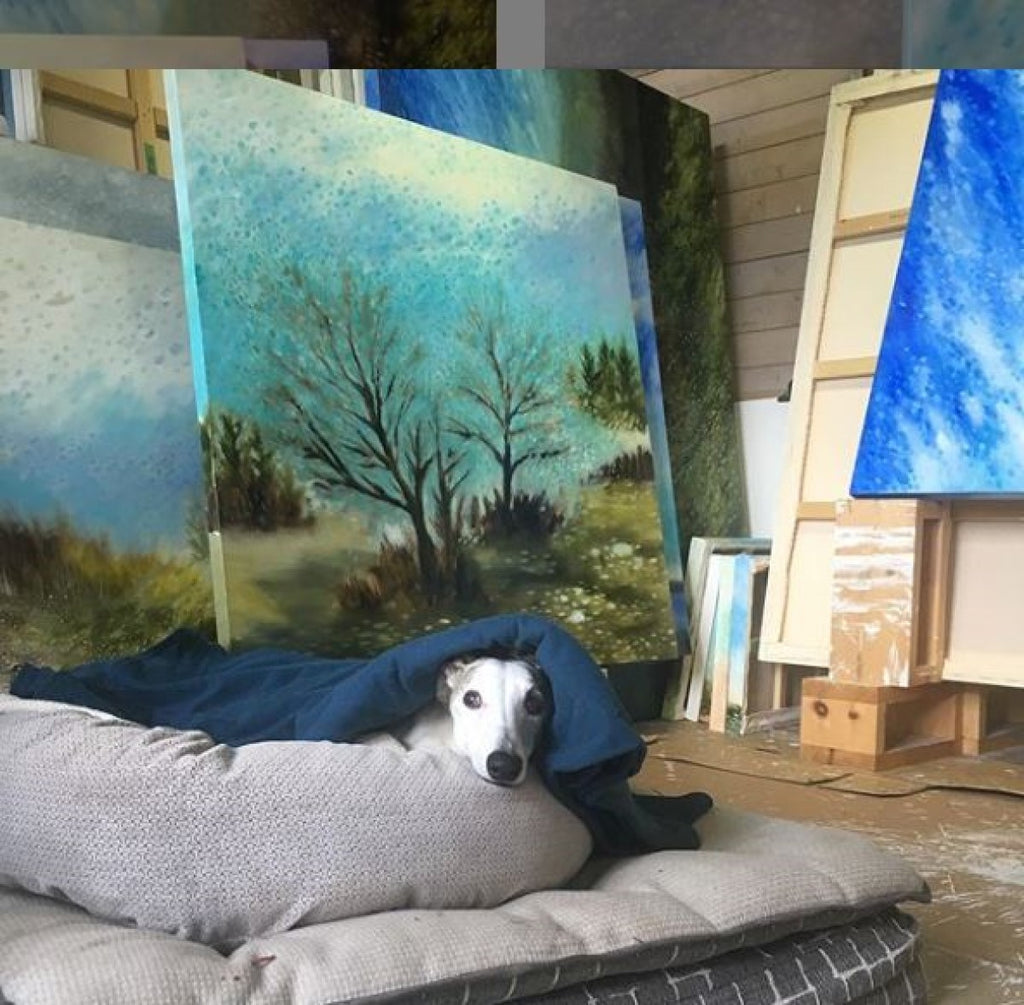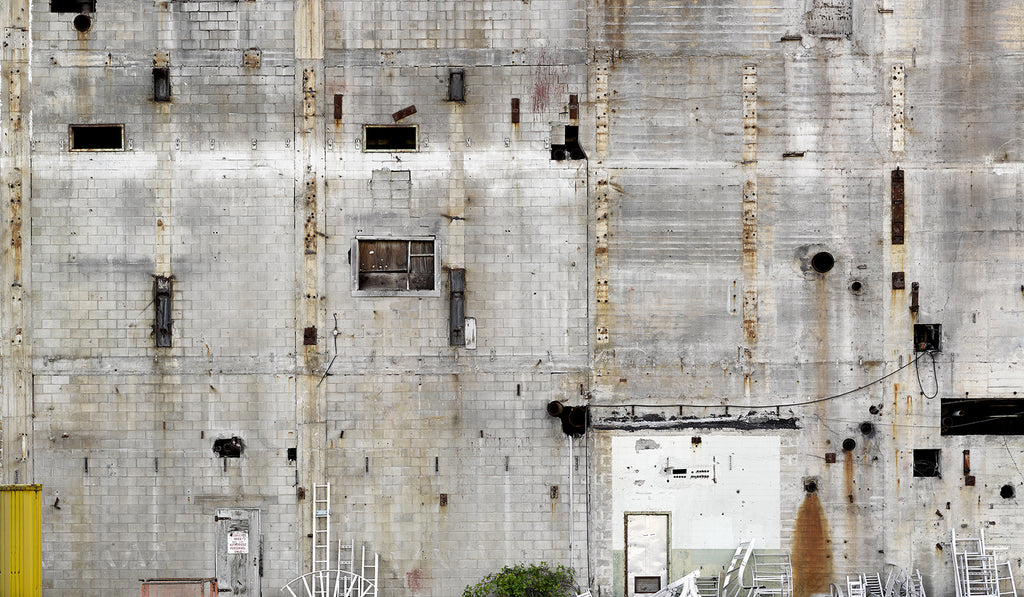Canadian artist Sheri Bakes on her newest series, Empathy for the Earth. Bakes invites us into her creative process and gives us a glimpse of the magical setting that inspired her latest artworks.

1. How do you place your work within the context or lineage of Canadian Art History?
When I was relearning how to paint I was looking a lot at both Impressionism and also the Group of Seven painters, including Emily Carr's work. After sitting with this work, I started to wonder what's missing. What is missing and what can I do to expand on what they were doing so I can be a contribution to the history of art.
Over time I've thought about this a lot. In my earlier work you can see the red trees are a reference to the work of A.Y. Jackson and the handling of brushwork attempts, more and more, to draw on some of what was going on in Vincent Van Gogh's work that relates to physics, specifically on the concept of turbulent flow in fluid dynamics.
2. Which artists have had the most profound influence on you and how have you diverged and developed your own unique imagery?
There are so many. I think Georges Braque and Paul Cézanne had a huge influence on my thinking and work in that they flipped point perspective onto one picture plane and created the painting for itself, as a flat surface. I've been really interested in taking that idea, along with more traditional point perspective ideas of receding space and combining them both to create a sort of "window/wall" effect combined in one painting.
An example of this is when you look at ponds with lily pads and koi fish…the lily pads are the flat wall-like parts, and the more translucent parts that you can travel into are the areas with the koi swimming below the surface of the water. I really like the impact and combination of both of these perspectives together in one piece.
Van Gogh has been a big influence both in his work and in his writings. His cognitive ability to abstract was incredible and I find both his words and work an endless source of inspiration.
The Group of Seven in their focus on Canadian landscape. I love this work and I try to take this direction and marry some of these ideas with what Van Gogh, Braque and Cézanne were doing.
Lastly, I also very often look through the work of the Leningrad School of painters as I love the loose poetic melancholy in so much of this work.
3. You are well known for your pointillist technique in your paintings. Could you describe your methodology and the philosophy behind it?
I do understand the "pointillist" connection in regards to art history, but for me it has more to do with physics. It has to do with the space between the painting and the viewer and trying to depict that space, too. I think so often we just focus on the three points of the artist/painting/viewer triangle but I'm equally as interested in the spaces between the points. That's what the focus on wind has been about too; the atmosphere and space between.
4. Is the luminous glow in your paintings an element you intentionally create and can you tell us about it?
For me light is the base or root of everything. In my spiritual practice this is where everything starts and everything comes from. It's a constant for me. The ideas and illusions between light and matter is pretty interesting to play with inside a context of "wind and weather." Matter can distort and block out the light in areas or create translucent veils, but ultimately the canvases are all painted with 15 layers of white gesso underneath and that is the light base metaphor for all of the work. Just like a prism fractures light into colours, the source of those fractures is one white light.

5. The colours in a lot of your past works had bright and electric hues but the artworks in this show have a softer palette. What is the reason for this transition?
Sometimes colour shifts have to do with something I want to learn in paint mixing or a feeling I want to experience more of. In this show I've wanted to explore subtly and space to create work that is more quiet but hopefully just as powerful. I suppose I wanted to create more of an awareness through more listening.
6. You mentioned that your studio is located on several acres of farmland and that a lot of your paintings from your latest “Empathy for the Earth” series depict different views of it. Can you describe this landscape and how it inspires you?
I'm currently living on 54-56 acres of farmland on Vancouver Island with highland cows and black Canadian Horses. It's a pretty dynamic atmosphere both in land and weather. There are 5-6 distinctly unique large fields plus trees and pathways from the animals and creeks that run between them. A variety of fruit trees, a lake below my studio in the winter and it empties out in the summer to create a lush field and there is a mountain range further off behind that. There really is a lot to draw from here as things change daily both in weather and in ground. I suppose for me inspiration is like light; it's a constant and not something that is separate. There will be a lot to draw from in any environment.

7. Can you tell us about the new (bird-like) brush marks in some of these new works?
I was experimenting with a painting from my last show called Serendipity's Run where I wanted to create the feeling I experienced from watching the newly arrived Trumpeter Swans stop in along their migration path. They landed in the lake below my studio one night and I woke up to what sounded like a lot of beeping. They stayed for quite a while as they rested and foraged. Both their vocal and massive wing sounds commanded attention. In this show I wanted to recreate a similar piece in large scale, just to experience a larger version of that same feeling.
8. Does music or literature play a role in your painting process?
Yes, I think it would have to. I wanted to play music but I just didn't have the right training or confidence. My father was classically trained in violin from age seven to sixteen and then switched to guitar. He played a variety of instruments on his own and in bands up until a couple years ago. This had a very big impact on me growing up, and now I try to create music in my work…a kind of visual sound that the brain can feel but can't exactly hear. I hope to create work that can touch the brain as music does but with visual sound.
9. When do you decide a painting is complete?
For me it's the same as making dinner. Decide what you want, put it together, maybe it needs a bit more pepper or salt, or apple cider vinegar or ginger... maybe some olive oil. Your taste buds will know when it's done, or done enough to be a satisfying meal. I paint the same way as making food.
10. What are you excited about painting in the next few months ahead?
Learning, growing, and being able to keep painting.
VIEW COLLECTION

































